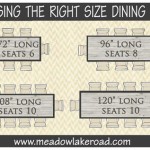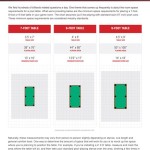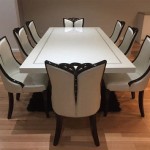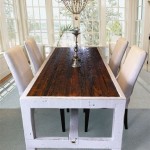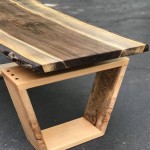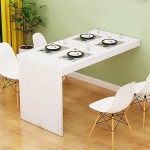Paintable Wallpaper: The Versatility of Peel and Stick
Paintable wallpaper offers a unique and customizable approach to interior decoration. Unlike traditional wallpapers with pre-printed designs, paintable wallpaper provides a textured blank canvas, allowing homeowners and decorators to imprint their personal style onto walls through the application of paint. The advent of peel and stick paintable wallpaper has further simplified the installation process, eliminating the need for messy pastes and specialized tools.
This type of wallpaper typically consists of a textured surface adhered to a self-adhesive backing. The textures can range from subtle patterns, such as linen or grasscloth effects, to more pronounced designs like geometric shapes or raised damask. The underlying material is often a non-woven fabric or vinyl, chosen for its durability and ability to hold paint evenly. The self-adhesive backing is formulated for easy application and repositioning, making it a user-friendly option for both experienced decorators and DIY enthusiasts.
The appeal of paintable wallpaper lies in its flexibility. It allows for complete control over the color scheme, enabling users to precisely match existing décor or create a custom palette. Furthermore, the textured surface adds depth and visual interest to walls, transforming a flat, unadorned surface into a focal point.
Peel and stick paintable wallpaper provides a convenient alternative to traditional wallpapering methods, as well as a customizable decorative solution. Before the utilization of this product, it is crucial to comprehend its characteristics, installations, potential and limitations.
Ease of Installation and Application
The primary advantage of peel and stick paintable wallpaper is its simplified installation process. Traditional wallpapering requires the application of wallpaper paste to the back of the paper, which can be messy and time-consuming. It also demands a certain level of skill to ensure the paper is properly aligned and free of air bubbles. Peel and stick wallpaper, on the other hand, eliminates the need for paste altogether.
The installation process typically involves the following steps: first, the wall surface must be clean, dry, and smooth. Any imperfections, such as holes or cracks, should be filled and sanded down. Next, the wallpaper is unrolled and cut to the required length, allowing for a slight overlap at the top and bottom. The backing is then peeled away, revealing the adhesive surface. The wallpaper is carefully aligned with the top of the wall and gradually pressed into place, working downwards. A smoothing tool, such as a plastic smoother or a damp cloth, is used to remove any air bubbles and ensure firm adhesion.
One of the key benefits of peel and stick wallpaper is its repositionability. During the initial stages of installation, the wallpaper can be easily peeled off and repositioned if necessary, allowing for corrections in alignment or adjustments to pattern matching. This feature is particularly helpful for beginners or those working on challenging areas, such as corners or around windows and doors.
The installation of peel and stick paintable wallpaper also requires less specialized equipment than traditional wallpapering. While a smoothing tool is recommended, it is not essential. A sharp utility knife or scissors is needed for trimming the wallpaper, and a level or plumb bob can be helpful for ensuring vertical alignment. However, the absence of paste and pasting brushes significantly reduces the mess and the overall cost of the project.
However, surface preparation remains critical. While the peel and stick nature simplifies the actual application, a poorly prepared surface can lead to adhesion problems and a less than satisfactory final result. Walls with peeling paint, excessive texture, or a dirty or dusty surface will not provide a suitable base for the wallpaper adhesive. Therefore, thorough cleaning and preparation are essential for ensuring the longevity and appearance of the installed wallpaper.
Furthermore, it is important to consider the type of paint used on the walls prior to installation. Glossy or semi-gloss paints can hinder adhesion, so it may be necessary to prime the walls with a matte finish primer to provide a better surface for the adhesive to grip. Similarly, if the walls have been recently painted, it is important to allow sufficient time for the paint to fully cure before applying the wallpaper.
Customization Through Painting
The primary advantage of paintable wallpaper is the ability to customize the color and finish of the walls. Once the wallpaper is installed, it can be painted with any standard interior paint. This allows for complete control over the final appearance, enabling users to create a unique and personalized space.
The painting process is similar to painting a regular wall. However, it is important to use a high-quality primer before applying the finish coat. The primer helps to seal the wallpaper and provide a uniform surface for the paint to adhere to. It also prevents the paint from being absorbed into the wallpaper, which can result in uneven color distribution.
The choice of paint finish can also significantly impact the final look of the wallpaper. Matte finishes tend to enhance the texture of the wallpaper, creating a soft and subtle effect. Semi-gloss or gloss finishes, on the other hand, can highlight the texture and make the wallpaper appear more dramatic. The selection of paint finish should be based on the desired aesthetic and the overall style of the room.
One of the benefits of paintable wallpaper is the ability to change the color of the walls without having to remove the wallpaper. If the homeowner decides to update the color scheme, the wallpaper can simply be repainted. This can save time and effort compared to removing traditional wallpaper and preparing the walls for a new installation.
Furthermore, paintable wallpaper allows for creative painting techniques, such as faux finishes or stenciling. The textured surface provides a unique canvas for these techniques, adding depth and visual interest to the walls. For example, a sponge painting technique can create a textured, layered effect, while stencils can be used to add patterns or designs.
It is also possible to use different colors on different sections of the wallpaper to create a more complex and visually appealing design. For example, the raised portions of a textured wallpaper can be painted in a different color than the recessed areas, creating a subtle contrast. This technique can be particularly effective with geometric or damask patterns.
The paintability of this wallpaper also extends its lifespan. Over time, walls can become stained or damaged. Instead of replacing the wallpaper, it can simply be repainted to restore its original appearance. This not only saves money but also reduces waste.
Considerations and Limitations
While peel and stick paintable wallpaper offers numerous advantages, it is important to consider its limitations. One potential drawback is the cost. Peel and stick wallpaper is often more expensive than traditional wallpaper, especially when considering the added cost of paint and primer. Therefore, it is important to weigh the cost savings of simplified installation against the higher material costs.
Another consideration is the durability of the self-adhesive backing. While most peel and stick wallpapers are designed to be long-lasting, the adhesive may weaken over time, particularly in areas with high humidity or temperature fluctuations. This can lead to the wallpaper peeling away from the wall, requiring repairs or replacement.
It is also important to choose a high-quality peel and stick wallpaper from a reputable manufacturer. Lower-quality products may have weak adhesives or thin, easily damaged surfaces. This can result in a difficult installation process and a less than satisfactory final result.
The texture of the wallpaper can also be a limiting factor. While textured surfaces add visual interest, they can also be more difficult to clean. Dust and dirt can accumulate in the crevices of the texture, requiring more frequent and thorough cleaning. Furthermore, some textures may be more prone to damage from scratches or impacts.
Another limitation is the removal process. While peel and stick wallpaper is generally easier to remove than traditional wallpaper, it can still be challenging, especially if the wallpaper has been installed for a long time. The adhesive may bond strongly to the wall surface, requiring the use of heat or chemicals to loosen the bond. In some cases, removing the wallpaper can damage the underlying wall surface, requiring repairs before the wall can be repainted or re-wallpapered.
The effectiveness of peel and stick wallpaper can also be influenced by the type of wall surface. As mentioned earlier, smooth, clean, and dry surfaces are ideal for adhesion. However, textured walls, walls with peeling paint, or walls with high moisture content may not be suitable. In these cases, it may be necessary to prepare the wall surface before installing the wallpaper.
Furthermore it is vital to consider the long-term maintenance of the wallpaper. While painting the wallpaper can extend its lifespan, it is important to choose a paint that is durable and easy to clean. Matte finishes may be more susceptible to stains and damage, while semi-gloss or gloss finishes may be easier to wipe clean.

Faux Beadboard Paintable Peel And Stick Wallpaper Pp10100 By Nextwall

Wallpops Egon Paintable Textured Vinyl Peel Stick Wallpaper Nordstromrack

Paintable Wallpaper At Lowes Com

Non Permanent Textured Peel And Stick Wallpaper

Gray Textured Wallpaper With Floral Ornaments Self Adhesive Peel Stick Repositionable Removable Etsy

Modern Abstract Graphic Cloth Art Wallpaper Peel And Stick Removable Textured Wall Mural Etsy

17 7x236 Teal Grasscloth Peel And Stick Wallpaper Faux Linen Contact Paper Self Adhesive Removable Textured Grass Cloth Fabric Vinyl Film Green Wall For Bedroom Cabinets Liner Walmart Com

Brewster Paintable Vinyl Pre Pasted Washable Wallpaper Roll Covers 56 4 Sq Ft Asc93996

Abyssaly 15 7 X 196 8 White Textured Peel And Stick Wallpaper Self Adhesive Embossed Removable Vinyl Film Cabinet

4000 96291 Nico White Tin Ceiling Square Paintable Wallpaper The Fabric Co

